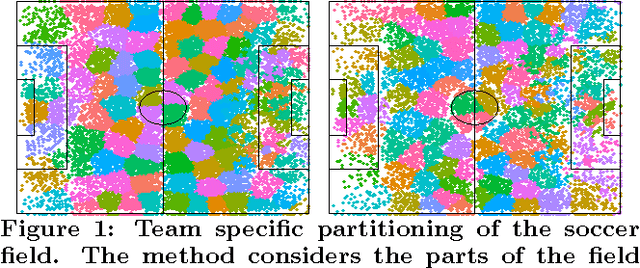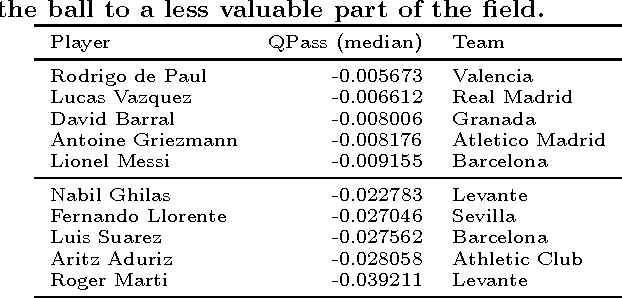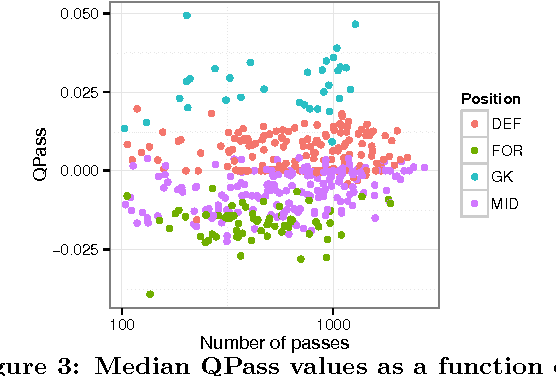Laszlo Gyarmati
QPass: a Merit-based Evaluation of Soccer Passes
Aug 08, 2016



Abstract:Quantitative analysis of soccer players' passing ability focuses on descriptive statistics without considering the players' real contribution to the passing and ball possession strategy of their team. Which player is able to help the build-up of an attack, or to maintain the possession of the ball? We introduce a novel methodology called QPass to answer questions like these quantitatively. Based on the analysis of an entire season, we rank the players based on the intrinsic value of their passes using QPass. We derive an album of pass trajectories for different gaming styles. Our methodology reveals a quite counterintuitive paradigm: losing the ball possession could lead to better chances to win a game.
Automatic Extraction of the Passing Strategies of Soccer Teams
Aug 10, 2015



Abstract:Technology offers new ways to measure the locations of the players and of the ball in sports. This translates to the trajectories the ball takes on the field as a result of the tactics the team applies. The challenge professionals in soccer are facing is to take the reverse path: given the trajectories of the ball is it possible to infer the underlying strategy/tactic of a team? We propose a method based on Dynamic Time Warping to reveal the tactics of a team through the analysis of repeating series of events. Based on the analysis of an entire season, we derive insights such as passing strategies for maintaining ball possession or counter attacks, and passing styles with a focus on the team or on the capabilities of the individual players.
 Add to Chrome
Add to Chrome Add to Firefox
Add to Firefox Add to Edge
Add to Edge